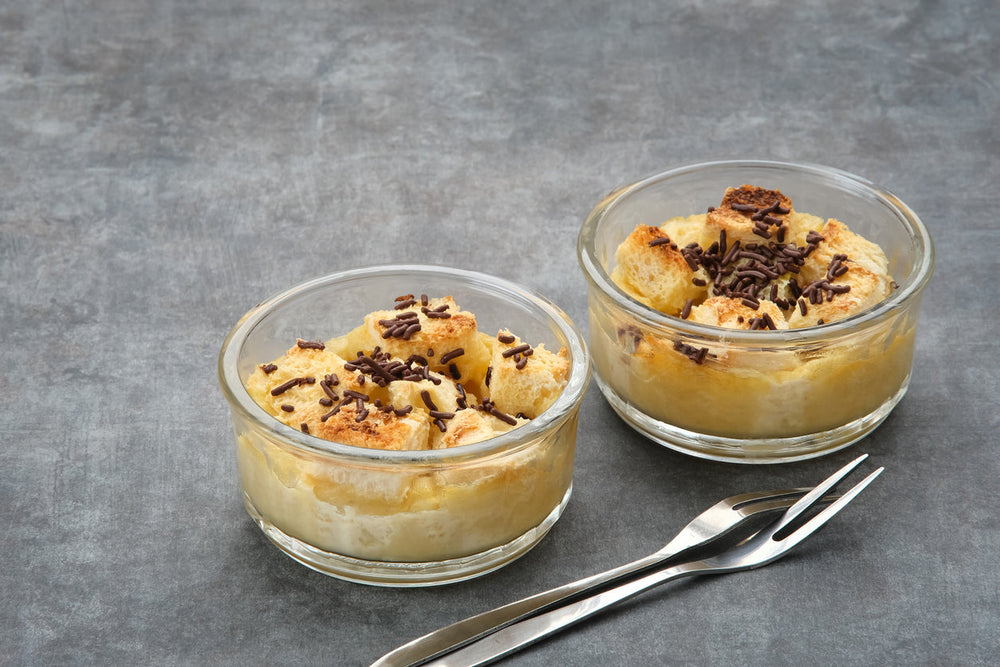Pudding may be a single word, but it represents two distinct culinary worlds when comparing British and American traditions. While some people think of pudding as savoury sausages or decadent steamed delicacies, others picture sweet, creamy sweets. Though they speak the same language, the British and Americans see what actually defines a "pudding from different angles." Below is a closer look at both styles, along with a few examples that demonstrate how versatile this humble dish can be.
Historical and cultural origins
In the United Kingdom, the concept of pudding dates back centuries. Puddings have long been savoury meals, usually boiled or steamed in a cloth or casing. They were an essential part of a hearty meal and were designed to be filling and robust. There are now many kinds of British pudding, from savoury ones that are served as a main dish to sweet ones that are eaten as treats.
In contrast, American pudding is largely a modern, dessert-focused dish. Originally invented in the 19th century, American pudding developed from custards and other sweet, milk-based recipes that gained appeal in the growing American food sector. It is typically served as a dessert, often chilled and accompanied by a variety of toppings.
Ingredients and preparation methods
British puddings like white and black pudding contain a mixture of meats, grains, and spices. West of Ireland Traditional White Pudding, for instance, is usually made from pork, suet, oatmeal, and herbs, while Jolly Posh White Pudding follows a similar recipe with slight regional tweaks. Donnelly's Irish Style Black Pudding incorporates blood, a key ingredient that gives it a distinctive taste and dark colour. These ingredients are mixed, encased, and then boiled or steamed until they reach a firm, sliceable consistency.
On the other hand, American pudding relies on a blend of milk, sugar, and a thickening agent such as cornstarch or gelatine. The mixture is gently cooked until it thickens into a smooth, creamy custard, and is usually served chilled. This contrast in ingredients highlights the differing culinary goals: British puddings are crafted for savoury meals that provide substance and flavour, whereas American puddings are designed to be light, sweet, and dessert-like.
Serving occasions and cultural significance

British puddings hold an important place in traditional meals. They are frequently featured as part of a full English or Irish breakfast, a Sunday roast, or even in special festive menus. The robust flavours and hearty texture of British puddings such as West of Ireland Traditional White Pudding make them a staple on the breakfast table, where they complement eggs, bacon, and toast. These puddings are celebrated for their rich heritage and are often produced by renowned local makers, preserving regional recipes that have been passed down through generations.
Conversely, American pudding is usually consumed as a dessert. It is common to find American pudding in home-cooked meals as a sweet finish to a dinner, or even as a mid-afternoon snack. Its smooth and delicate texture, combined with its sweet flavour profile, makes it appealing to those seeking a light and refreshing treat. The contrast in usage further underscores the cultural distinctions: British pudding is integral to the main meal, while American pudding is reserved for indulgence after the meal.
One word, two worlds
Though both British and American puddings share a name, their interpretations could not be more different. Britain’s definition is far broader, encompassing everything from sausages to rich sponge desserts, while America’s focuses on a sweet, creamy consistency. Travellers on either side of the Atlantic might find themselves pleasantly surprised (or occasionally bemused) when encountering pudding in its many forms.
Ultimately, these variations remind us of the diverse ways in which language and culture intersect to create unique food traditions. Whether tucking into a slice of black pudding at breakfast or indulging in a bowl of chilled chocolate pudding, there is room for every taste. Embracing both styles offers a delicious look at how one simple word can encompass a world of flavours.


 Christmas 2025
Christmas 2025
 Frozen Food
Frozen Food
 Baking
Baking
 Beans, Peas, Soups & Tins
Beans, Peas, Soups & Tins
 Biscuits, Crackers & Cookies
Biscuits, Crackers & Cookies
 Candy / Sweets
Candy / Sweets
 Crisps & Snacks
Crisps & Snacks
 Chemist / Pharmacy
Chemist / Pharmacy
 Desserts
Desserts
 Gravy, Stock & Paste
Gravy, Stock & Paste
 Haggis
Haggis
 Indian Sauces, Paste and Pickle
Indian Sauces, Paste and Pickle
 Jams & Preserves
Jams & Preserves
 Poppy Appeal
Poppy Appeal
 Pot Noodles & Super Noodles
Pot Noodles & Super Noodles
 Scone Mix
Scone Mix
 Gluten-Free / Free From
Gluten-Free / Free From
 Tea Accessories
Tea Accessories
 Teapot & Tea sets
Teapot & Tea sets
 Tea For One
Tea For One
 Sugar & Creamer
Sugar & Creamer
 Tableware
Tableware
 Serveware
Serveware
 Plates & Trays
Plates & Trays
 Bowls
Bowls
 Cups & Saucers
Cups & Saucers
 Mugs
Mugs
 Silverware
Silverware
 Dinnerware - Accessories
Dinnerware - Accessories
 Dinnerware - For Pets
Dinnerware - For Pets
 Victoria Eggs - Hand-Drawn UK Homeware
Victoria Eggs - Hand-Drawn UK Homeware
 Jewelry & Accessories
Jewelry & Accessories
 Sale
Sale
 Christmas Gifts
Christmas Gifts

